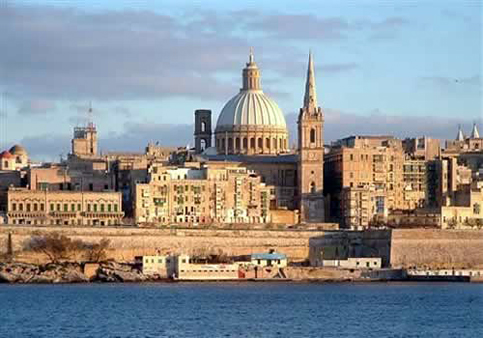Geographical Location and Population
Valletta is the capital of Malta, colloquially known as Il-Belt (English: The City) in Maltese. It is located in the central-eastern portion of the island of Malta, and the historical city has a population of 6,966. Valletta is the second southernmost capital of the EU member states after Nicosia.
Valletta contains buildings from the 16th century onwards, built during the rule of the Order of St. John of Jerusalem, also known as Knights Hospitaller. The city is essentially Baroque in character, with elements of Mannerist, Neo-Classical and Modern architecture in selected areas, though World War II left major scars on the city. The City of Valletta was officially recognised as a World Heritage Site by UNESCO in 1980.
The city was named after Jean Parisot de Valette, who succeeded in defending the island from an Ottoman invasion in 1565. The official name given by the Order of Saint John was Humilissima Civitas Valletta — The Most Humble City of Valletta, or Città Umilissima in Italian. The bastions, curtains and ravelins along with the beauty of its Baroque palaces, gardens and churches, led the ruling houses of Europe to give the city its nickname Superbissima — Most Proud.
History
After the Great Siege of 1565, the Knights set about an ambitious project, the building of Valletta, the so-called 'city built by gentlemen for gentlemen'. Pope Pius IV sent his foremost engineer, Francesco Laparelli, to build the city both as a fortress to defend Christendom and as a cultural masterpiece. A unique example of the Baroque, Valletta has been designated a World Heritage City.
In its day, Valletta was a fine example of modern city planning. Designed on a grid system, now common in the United States, the city was carefully planned to accommodate water and sanitation and to allow for the circulation of air. Most towns and cities evolved over centuries, but Valletta, in contrast, was one of the first European cities to be constructed on an entirely new site.
Grand Master Jean de la ValletteFrancesco Laparelli left the completion of Valletta to his assistant, the Maltese, Gerolamo Cassar (1520-92), who had studied in Rome. Cassar's masterpiece is the Co-Cathedral of St. John.
The magnificent, baroque interior was the later work of the Calabrian artist and knight, Mattia Preti (1613-99). The first baroque buildings to be designed in Valletta were the work of an Italian architect from Lucca, Francesco Buonamici, the Knights' resident engineer from 1634-59, assisted by the Italian military architect Floriani. He not only extended the fortifications to Floriana, but designed churches for Valletta, Rabat and Ħaż-Żebbuġ.
Intangible Cultural Heritage
Walking around Valletta you'll come across an intriguing historical site around every corner: votive statues, niches, fountains and coats of arms high up on parapets. Narrow side streets are full of tiny quaint shops and cafés, while Valletta's main streets are lined with larger international branded shops for fashion, music, jewellery and much more.
The Maltese Islands have three sites inscribed on the UNESCO World Heritage List. These are the City of Valletta, the Megalithic Temples and the Ħal Saflieni Hypogeum.
In all, seven megalithic temples are found on the islands of Malta and Gozo, each the result of an individual development. The two temples of Ġgantija on the island of Gozo are notable for their gigantic Bronze Age structures. The Ġgantija Temples are the oldest, free-standing monuments in the world and are a testament to the Island's inhabitation for at least 1,000 years before the famous Egyptian pyramids of Giza were constructed.
On the island of Malta, the temples of Ħaġar Qim, Mnajdra and Tarxien are unique architectural masterpieces, given the limited resources available to their builders. The Ta' Ħagrat and Skorba complexes show how the tradition of temple-building was handed down in Malta. These temples were inscribed on the World Heritage List as a group and represent a unique architectural tradition that flourished on the Maltese Islands between 3600 and 2500 B.C.
The Ħal Saflieni Hypogeum is a rock-cut underground complex that was used both as a sanctuary as well as for burial purposes by the temple builders. It was discovered during construction works in 1902. The three underground levels date from around 3600 to 2400 B.C. The monument is considered one of the essential prehistoric monuments in the world.
The capital of Malta, Valletta, is inextricably linked to the history of the military and charitable Order of St John of Jerusalem. Built after the Great Siege of 1565 and named after Grandmaster Jean Parisot de la Valette, this fortified city has hundreds of monuments, all within a relatively small space, making it one of the most concentrated historic areas in the world







Follow ICCN